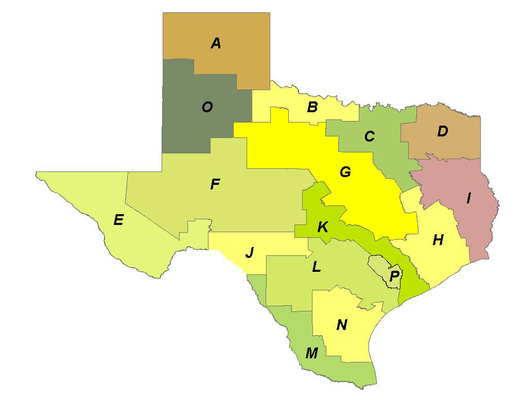
by Scott Moorhead, Suzanne A. Pierce and Carey King Thursday, January 5, 2012

Texas, divided into 16 Regional Water Planning Areas, colored according to water availability in 2010 (minimum is greener, maximum is pinker). Planners use these to construct 'treemaps,' visual models to compare water and energy data. Data sources: Texas Water Development Board, Water for Texas, 2007 and Stillwell et al., Energy-Water Nexus in Texas, 2009
"This is our generation’s Sputnik moment," declared President Barack Obama in the 2011 State of the Union address, challenging the nation to pursue a future of cleaner energy.
As we did a generation ago, we now face significant challenges — challenges that need to be met sooner rather than later to protect and grow our economy, build energy autonomy and preserve our resources for future generations. These challenges center on two resources: energy and water.
Today, nothing is more critical than growing our economy. And economies do not grow without energy. For this reason, the oil, natural gas, coal, nuclear, wind and solar energy industries are vocal about how their fuel sources are the only way to continue economic growth. And although they might tell us otherwise, these industries have a lot more in common than they let on: None of them can move forward without water, one of the key choke points in energy creation.
A cogent, workable approach to energy-water policy is necessary at all scales in the United States to meet energy needs while sustaining available, affordable water supplies. That requires figuring out how much water will be needed and where, how much energy will be needed and where, and how to tie the two together. Novel research methods being used in Texas, a state that has been on the forefront of water and energy issues for decades, can serve as a road map for the way forward.
© 2008-2021. All rights reserved. Any copying, redistribution or retransmission of any of the contents of this service without the expressed written permission of the American Geosciences Institute is expressly prohibited. Click here for all copyright requests.